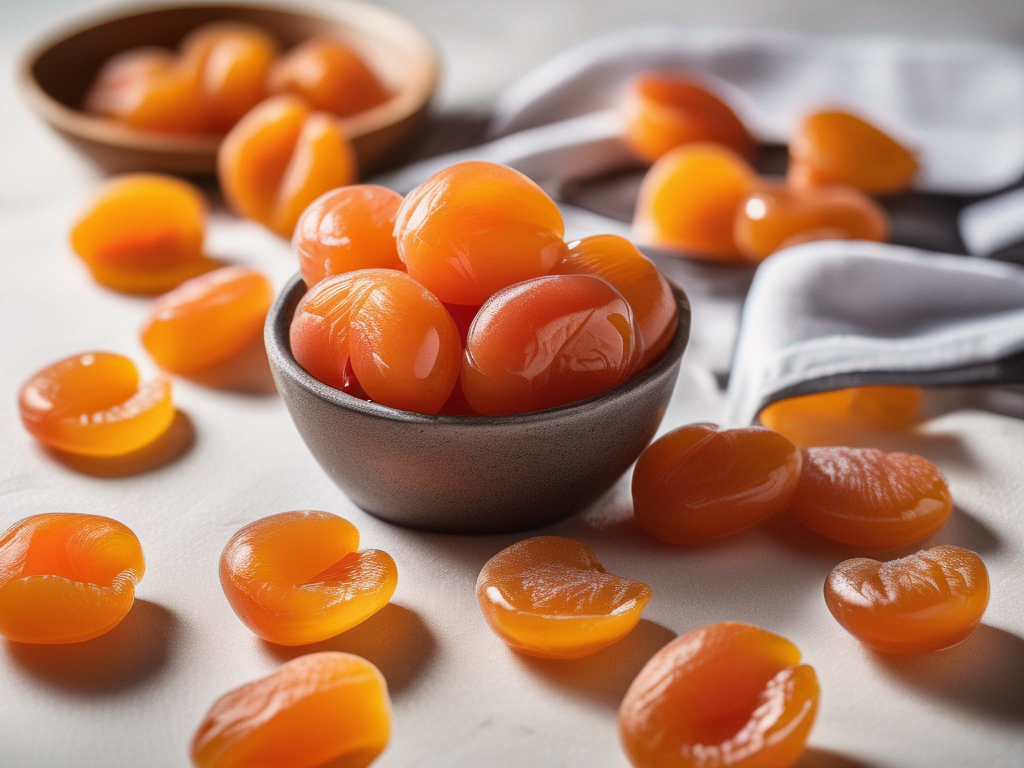
How to Store Candied Apricots for Long-Lasting Freshness
Get Your Free Food Safety Cheat Sheet
30 most common foods with instant answers. Print it and stick it on your fridge—completely free!
How to Store Candied Apricots for Long-Lasting Freshness
Candied apricots are a delightful treat that can be enjoyed on their own or used in various recipes to add a burst of sweetness. However, to ensure that your candied apricots retain their freshness and flavor for an extended period, proper storage is key. In this comprehensive guide, we will explore the best practices for storing candied apricots to maintain their quality over time. (Candied apricots)
Understanding Candied Apricots
Before we delve into storage tips, let's briefly discuss what candied apricots are and how they are made. Candied apricots are apricot halves or slices that have been cooked in a sugar syrup until they become tender and translucent. This process not only enhances the natural sweetness of the apricots but also preserves them, making them ideal for long-term storage.
Candied apricots can be enjoyed as a standalone snack, used as a topping for desserts, or incorporated into baked goods such as cakes and pastries. Their versatility and long shelf life make them a popular choice for both sweet and savory dishes.
Benefits of Candied Apricots
- Rich in natural sugars
- Versatile ingredient for various recipes
- Extended shelf life compared to fresh apricots
Proper Storage Techniques for Candied Apricots
To ensure that your candied apricots remain fresh and flavorful, it is essential to store them correctly. Here are some tips to help you preserve the quality of your candied apricots for an extended period:
1. Choose the Right Container
- Use airtight containers: Transfer the candied apricots to airtight containers to protect them from exposure to air, moisture, and odors.
- Glass jars or plastic containers: Opt for glass jars or BPA-free plastic containers with tight-fitting lids to maintain freshness.
2. Store in a Cool, Dark Place
- Avoid direct sunlight: Keep the containers of candied apricots away from direct sunlight, as exposure to light can cause them to lose their color and flavor.
- Optimal temperature: Store the candied apricots in a cool, dark pantry or cupboard with a consistent temperature to prevent them from spoiling.
3. Maintain Proper Humidity Levels
- Dry environment: Ensure that the storage area is dry, as excess moisture can cause the candied apricots to become sticky or moldy.
- Use silica gel packs: Place silica gel packs in the containers to absorb any excess moisture and maintain the texture of the apricots.
4. Rotate Stock Regularly
- First in, first out: Practice the "first in, first out" method to ensure that older batches of candied apricots are used before newer ones to prevent spoilage.
- Check for freshness: Periodically inspect the candied apricots for any signs of spoilage, such as mold or off flavors, and discard any that appear to be compromised.
5. Freeze for Long-Term Storage
- Freezing option: If you want to store candied apricots for an extended period, consider freezing them in airtight containers or freezer bags.
- Thawing process: When ready to use the frozen candied apricots, thaw them in the refrigerator overnight to preserve their texture and flavor.
Conclusion
By following these storage tips, you can ensure that your candied apricots retain their freshness and quality for an extended period. Proper storage in airtight containers, a cool environment, and regular inspection for freshness are key to preserving the flavor and texture of the candied apricots. Whether you enjoy them as a standalone treat or use them in your favorite recipes, properly stored candied apricots will continue to delight your taste buds for months to come.
For more information on candied apricots and other food storage tips, check out [candied apricots](/food/candied apricots). (Candied apricots)
Related Posts
Here are some other articles you might find helpful:
Authoritative Food Safety References
These agencies and university labs inform every tip and health precaution we publish.
USDA FoodKeeper – Cold Storage Guidelines
Official refrigerator, freezer, and pantry timelines maintained by the U.S. Department of Agriculture.
Visit USDA FoodKeeperFDA Produce Safety Rule & Grower Guidance
Field-to-fridge handling practices that prevent contamination of fruits, vegetables, and leafy greens.
Visit FDA Produce SafetyCDC Foodborne Illness Prevention Hub
Surveillance-backed guidance on pathogens, symptoms, and steps to reduce foodborne illness risk.
Visit CDC Food SafetyUC Davis Postharvest Technology Center
University research detailing optimal storage atmospheres for produce after harvest.
Visit UC Davis PostharvestPenn State Extension – Home Food Preservation & Safety
Peer-reviewed extension bulletins on safe canning, chilling, and reheating practices.
Visit Penn State ExtensionGet Your Free Food Safety Cheat Sheet
30 most common foods with instant answers. Print it and stick it on your fridge—completely free! Want more? Upgrade to the complete guide with 70+ foods.
Scan your food directly and get instant safety info using our AI-powered camera feature.